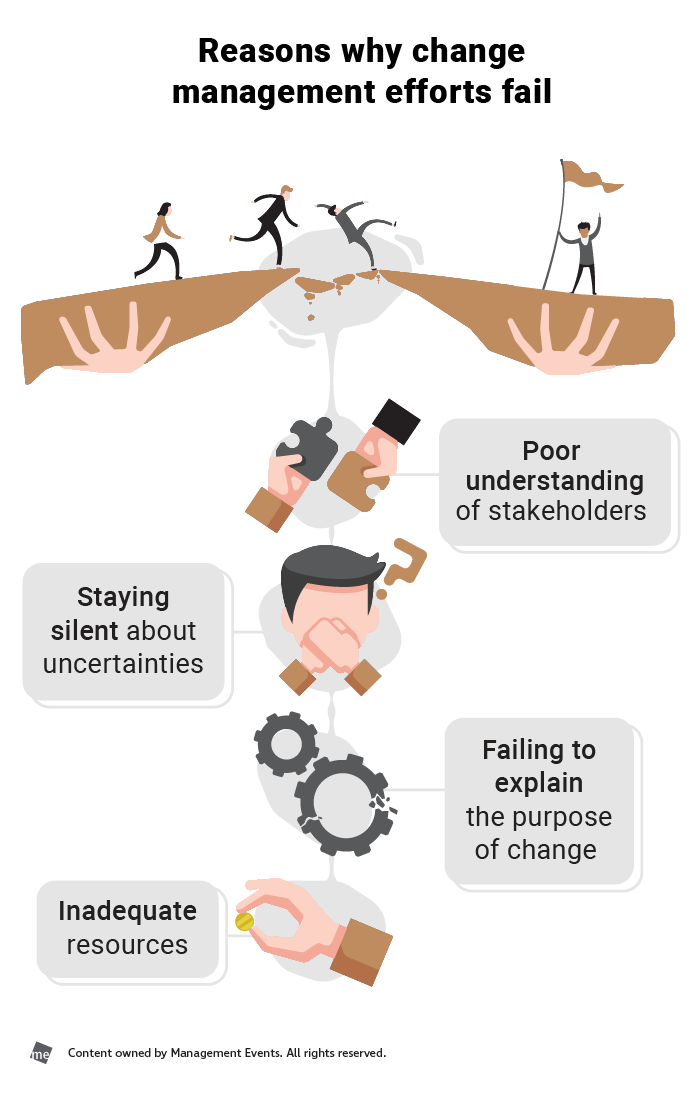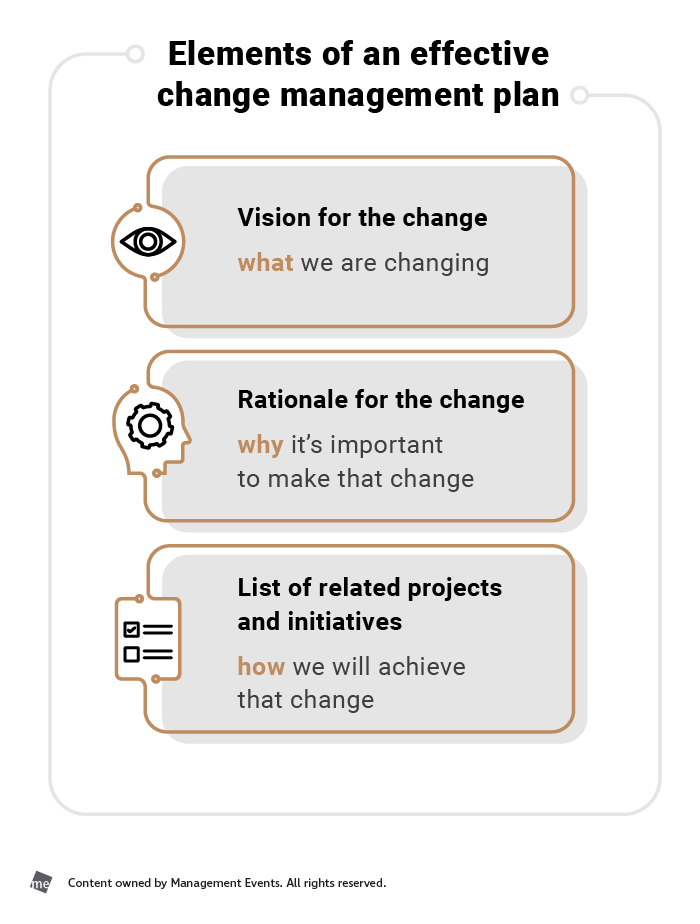< Back to insights
Published 19. Apr. 2021
How Can CIOs Implement Effective Change Management?
CIOs play a key role in ensuring poor change management does not stand in the way of their organization's greatness.
Change management is inevitable in the era of digital transformation — at individual and enterprise levels. Over the past year, organizations across the globe experienced some form of change management out of necessity.
Shona Elliot, best-selling author and executive management & leadership consultant, shared her insights on organizational change management in a recent Transformation Thursday session on Clubhouse hosted by Management Events.
“COVID has completely moved the needle in terms of what change looks like beyond the proper change management processes of the past,” she says.
All eyes are on CIOs to not only spearhead the adoption of new technologies, but to also become leaders in change management. Easier said than done, right?
The modern CIO may find it difficult to focus their energies on the right areas with so many elements in flux — rapid digitalization, customer expectations, technology advancements, cyber security and shifting go-to-market strategies, among others.
Therefore, it is essential that CIOs craft change management strategies that can withstand the volatility of current times, as well as help their organizations enable effective transformations in 2021.
CIO: The New Change Agent
“Change management is the art of making organizations work well – and continue to work well.” – Michael K. Levine, author of People Over Process: Leadership for Agility.
CIOs wear many hats; the newest one being an agent of change. Digital advancements have propelled CIOs to the forefront of organizational change. As a key change agent, CIOs now have the responsibility to promote cultural shifts for successful transformation.
As more IT organizations adopt agile and design thinking methods to align with overall business goals, CIOs must be able to manage the impact of this change successfully. According to Accenture, the efficacy of technical business transformations relies on strong change management leadership to guide teams through this process.
Why is Change Management So Hard?
70%. This is the percentage of change management initiatives that fail to meet their goal. Change management is hard to get right, and CIOs are forced to face the added challenge of a global pandemic and a remote workforce.
The main reasons why change management efforts fail at enterprise level are:

Often, C-levels prioritize technical capabilities over business capabilities when taking on new spending methodology projects. Majority of resources are utilized on data, tools and insights when it should be focused on the business process adaptations that stem from change management principles.
Organizations must discard the “There’s an app for that!” philosophy where they become too reliant on packaged software applications to drive internal processes. This philosophy leads to the increasing difficulty of educating and convincing employees to use new technological systems, something CIOs should address urgently.
What is Change Fatigue?
As humans, our brains are hardwired to resist change.
According to Elliot, “I’ve heard senior leaders many times in their career say they are just going to be resisting change or a stakeholder group is just going to resist it.”, and nothing can be done except to move forward to something new. In addition, 92 % of participants in a Deloitte survey stated that resistance to change is an expected reaction from employees as well.
The rapid pace of continuous change at organizations may take a toll on employees, also known as ”change fatigue”. This is on top of the stress caused by the pandemic and health concerns, economic issues and job uncertainty. If not addressed immediately, change fatigue can be a serious inhibitor of digital transformation.
CIOs must keep this in mind when planning change management strategies. Change fatigue can result in C-level peers and employees becoming frustrated and resentful — which can get in the way of achieving company goals.
What Makes a Good Change Manager?
Forward-thinking change managers must redefine the concept of change management for their organizations. This is supported by Elliot, who recalls leaders with a traditional mindset having an awakening around the importance of their employees and building a people-centric culture.
“It is looking at all of the decisions through the lens of ‘how does this impact our employees and teams?’ and ‘how do we talk to them about it?’”
This shift in mindset will help with creating a simple and effective change management project plan, that should include:

Furthermore, a change management project plan should be supported by these strategies:
- Assess change readiness of employees to determine overall stress and morale level as well as openness to change,
- Understand how the organization and working culture has been impacted by external events,
- Acknowledge the importance of aligning people, technology and processes,
- Translate overarching goals and objectives into specific transformational strategies,
- Ensure all internal stakeholders and executives are aligned and informed.
With the rise of remote workforces, change management strategies are likely to succeed when CIOs take the time to utilize digital communication tools to connect with teams within the organization and listen to their concerns.
Besides that, IT leaders can propel their teams to digital transformation with five pillars of change management success:

They can tailor existing change management models to their organization’s needs, such as Lewin’s Change Management model, McKinsey 7-S model and Kotter’s theory.
Why is Change Management Important for CIOs to Understand?
Valuable time and resources go into adopting new technologies and processes. Without change management, that time and money go to waste.
According to Elliot, senior leadership needs to understand all the components to change and craft an approach to help spearhead successful change initiatives. CIOs should also note that change management plans are not a one-person job.
“I look at it as a co-creation model, to be able to include stakeholders that are going to be responsible for delivering the change and include them in the conversation as early as possible.”
Furthermore, IT leaders who involve employees in designing change management processes are more likely to succeed. Results from a Gartner survey reveal employee engagement and retention rate increased by 38% and 46% respectively with the integration of open source change management.
A good change manager keeps their employees in mind and closely collaborates with stakeholders when building an impactful change management strategy.
Once seen as an isolated and ongoing project, change management is now reactive and necessary. CIOs must make their mark in the change management landscape and inspire their organization to be excited about change, instead of fearing it.
